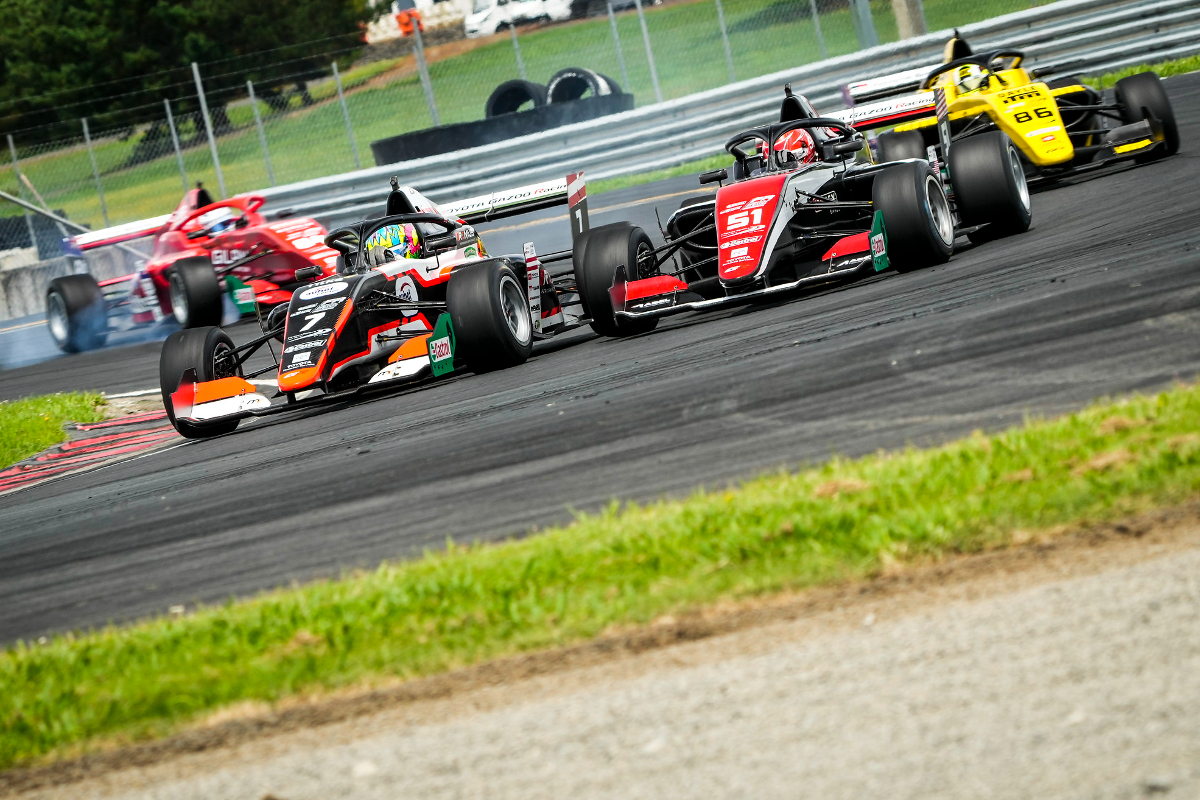
Photo: TGR NZ
Toyota Gazoo Racing New Zealand’s motorsport manager Nicolas Caillol was recently doing the rounds in junior paddocks at Paul Ricard to generate interest in Formula Regional Oceania.
“Basically, it’s just starting the European tour for Toyota, talking to drivers, and starting to promote the series for 2024 and the possibility to do some running for five weeks in New Zealand over the winter,” he told Formula Scout.
The French expat is no stranger to Europe’s racing scene with experience of multiple categories, including running Jenzer Motorsport’s GP3 team.
The reaction has been “pretty positive,” he says. “Everybody wants to get more running and more preparation in the winter, having access to a championship with a lot of mileage. Especially at that age, drivers need more time in the car.”
Three current FRegional European Championship drivers did FRegional Oceania at the start of 2023, and Charlie Wurz was champion.
“He was really happy to have done that season. It’s good to have a driver here that they can talk to about the experience they had in the country,” says Caillol, who presented Wurz with the MotorSport New Zealand Gold Star while in France.
During the Northern Hemisphere’s winter, there is also FRegional Middle East. Caillol feels there is “space for both championships”.
“We are turning a little bit more to the American market than we used to in the past, but I think there are enough drivers on the market who want to get the extra experience to fill the two grids.”
“There is still a preference to promote Kiwi drivers and to allow them to benchmark themselves against the best European and American drivers,” he explains. “In an ideal world it would be 40% European, 40% American and 20% Kiwi drivers.”
Caillol believes that racing against different competitors to Europe offers “a little plus compared to [FRME]”.
With subsidies from TGR NZ keeping costs for the five-round season at €160,000, “it’s quite cheap compared to the Middle East,” he says. “Toyota is interested in developing drivers and talent.”
Six European teams race in FRME, and FRegional Oceania’s priority is for “teams to collaborate with the existing teams,” citing the examples of ART Grand Prix partnering with M2 Competition this year.
“We are looking at the moment potentially at a team from the US coming, under their own name or with a collaboration.”
Previously known as the Toyota Racing Series, this season was the first using the FRegional Oceania name and the third using FRegional cars, powered of course by Toyota engines.
“The Toyota engine is a little bit different to what they’re running [in Europe]; it’s a little bit more torquey at lower RPMs and we allow a bit more RPM on the start compared to FREC, but otherwise it’s pretty similar,” Caillol says.
The car and name switch meant FRegional Oceania’s FIA superlicence points allocation increased to match other FRegional series, and TGR NZ is closely monitoring the development of second-generation FRegional chassis which could be introduced down under in “2025 or ’26”.
Next year’s calendar has some changes for “logistical reasons”. Ruapuna returns after a five-year absence, and the season-ending New Zealand Grand Prix moving to Highlands Motorsport Park means it takes place on the South Island for the first time since 2007.